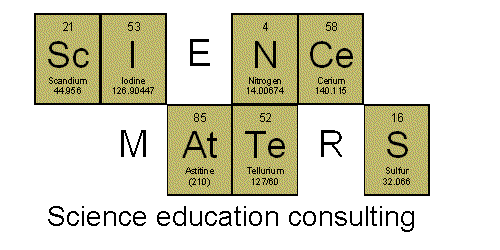I've seen the Flinn Version, How Sweet It Is, numerous times, and it's very cool. Unfortunately, it's not very practical for me. I'm not in a classroom, so I don't have balances readily available, nor do I have access to ring stands and separatory funnels. I've always figured I could find a way to recreate the experiment to make it work for me, but I've just never made it that far down my list of things to do.
And then I found this version, which does not require any of the aforementioned equipment. (I have adapted it slightly to include two additional colors). And, if you're just planning to make the solutions ahead for demonstration purposes, it's faster. In fact it's perfect for doing at home. It's also simple enough for young students to help with.
Now, before I go on to show you how simple it is, let me point out that for older students the Flinn version may be superior:
1 - It's always good to practice using equipment to make accurate measurements.
2 - In the Flinn version, students find the mass of the sugar, which allows them to calculate the actual density of each solution. You could also have them calculate the sugar concentrations.
Enough talking, on with the fun!
Line up 5 glasses. Add sugar to the glasses as follows:
Glass 1: no sugar
Glass 2: 1 tablespoon
Glass 3: 2 tablespoons
Glass 4: 3 tablespoons
Glass 5: 4 tablespoons
Glass 6: 5 tablespoons
Add 4 tablespoons of water to each glass and stir to dissolve the sugar. Make sure the sugar in each glass is completely dissolved. If you need to add water to one glass, you'll need to add an equal amount of water to each of the other glasses.
Add food coloring to the glasses, a total of 2-3 drops per glass, as follows:
Glass 1: red
Glass 2: red + yellow
Glass 3: yellow
Glass 4: green
Glass 5: blue
Glass 6: blue + red
To make the column:
Pour the purple solution into a tall, colorless glass (or a graduated cylinder if you have one).
Hold a spoon over the glass, near the top of the purple solution, and pour the blue solution slowly over the back of the spoon. This technique will minimize the mixing of solutions.
As you can see, I haven't yet perfected the pouring technique, but it isn't completely muddled either. I think I could have gotten a better rainbow if I had tried again immediately after doing this one, but I decided it wasn't worth using a bunch more sugar just to capture a better photo. That said, I think my rainbow looked better than the above photo shows - I just couldn't get the light right to show all the colors.
If you're doing this as a demonstration, you very well may want to make sure you have enough solutions to give yourself a test run before the actual assembly.











No comments:
Post a Comment
Note: Only a member of this blog may post a comment.